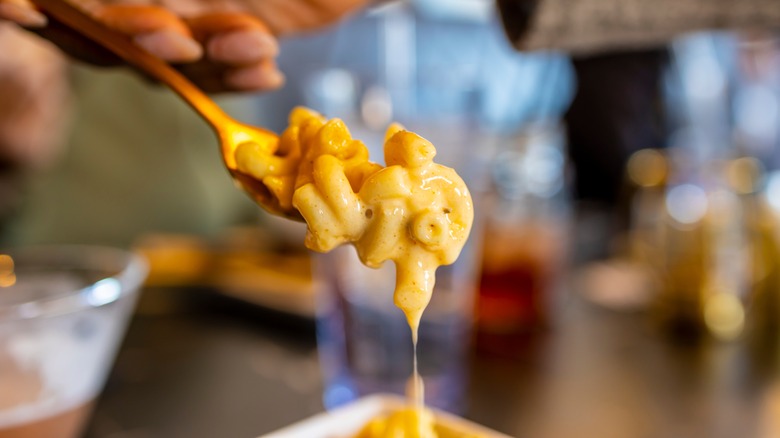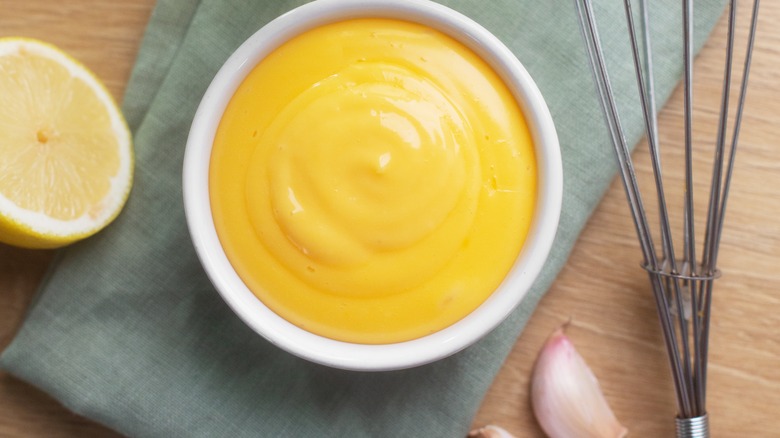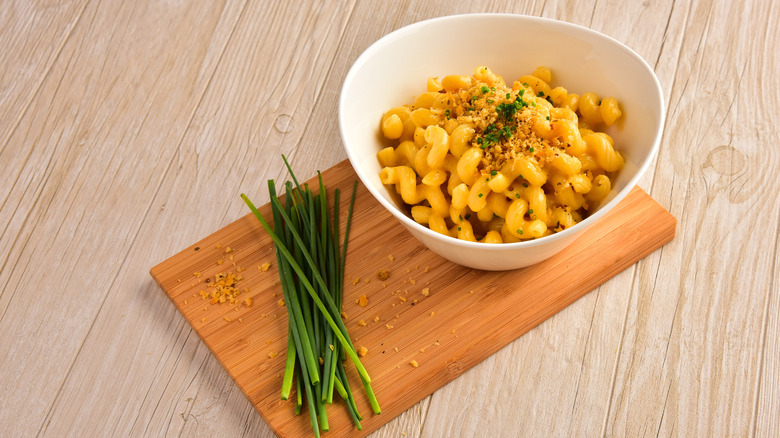For The Creamiest Mac And Cheese, You Need A Blender
For a dish literally named for its primary components, mac and cheese recipes run the gambit, and can have a laundry list of ingredients limited only by the cook's imagination. But while many boast a "secret" ingredient, for the most luxurious mac and cheese, it all comes down to method. The true key to the creamiest mac and cheese is a blender.
The reason for this has to do with microscopic forces at work in the creation of mac and cheese. Achieving a sauce that doesn't turn out grainy is tough, because water and cheese lipids are naturally at odds and aren't interested in combining — or emulsifying. This feat is possible to achieve with the aid of additives commonly employed by commercial food companies, but there's a way to make this magic happen far more naturally at home.
Enter the blender. Thanks to the force and speed of this handy contraption, along with the friction heat caused by the whirring blade, the household tool can break down food particles into elements so small that the elements of one liquid will become suspended in the other. The result in layman's terms? Rich, macaroni-coating goodness that doesn't separate when heated.
There's an added bonus, too. By using this quotidian kitchen tool, you get to sidestep shredding the cheese by hand, since the blender will do that part, too. You can also avoid buying pre-shredded supermarket packages of cheese, which contain anti-caking agents that interfere with the ability to melt and become creamy.
What is an emulsion, and where have you seen it before?
There are some liquids out there that just don't like to mingle. (Perhaps the most notorious among them being oil and water.) But with a little extra effort and the right circumstances, you can create a rich, luxurious union that remains smooth and won't separate, from ingredients that might not otherwise take so kindly to one another. This is an emulsion, and it's responsible for a super creamy consistency even when cream itself isn't present (like in classic cacio e pepe).
In the case of American mac and cheese, the liquids you're trying to combine are dairy fat and water. Part of the reason the boxed stuff works so well is because of the addition of sodium phosphate (introduced to the cheese world by a fellow by the name of James Kraft in 1916, first in the context of his company's American cheese slices, and now present in those ubiquitous blue boxes), an agent that helps maintain the emulsion between the fat droplets and water.
Fortunately, for those of us without sodium phosphate on hand, there are other ways to make an emulsion work, like this blender trick. Believe it or not, you probably already enjoy the alchemy of an emulsion on a daily basis. Butter, milk, and cream are all natural emulsions, while ice cream, espresso, and sauces or condiments like hollandaise, mayonnaise, and beurre blanc rely on emulsification for their signature creaminess.
Ways to jazz up your mac & cheese
Mac and cheese is perhaps one of the most customizable dishes in the American culinary canon. It's easy enough to riff within the most common boundaries by simply switching up the type of cheese and the type of pasta. You can even manipulate the color, as Wolfgang Puck demonstrates (while using the blender method) by including carrots into the mix. Beets work well, too, and create a vibrant pink pasta.
When attempting to emulate the blue box stuff, Worcester sauce and mustard powder are common, but a balsamic reduction and crispy onions is a killer way to introduce similar flavors in a unique and layered spin. Fresh or fried garlic will add depth and crave-ability, and fresh herbs can brighten things up.
For heat, cayenne or jalapeno are an excellent add, and honey or even maple syrup are excellent sweet ingredients that balance some of that cheesy umami and elevate your dish. Add proteins like ground beef for a hamburger mac and cheese, or go extra luxe with lobster mac and cheese. Texture in the form of breadcrumbs, crumbled tortilla or potato chips, or toasted nuts like almonds or pecans helps keep every bite interesting. Mac and cheese is also a perfect platform for sneaking in your veggies, too, with cauliflower or broccoli or Brussels sprouts tossed right into the mix. Because what doesn't taste great smothered in super creamy, cheese sauce?


